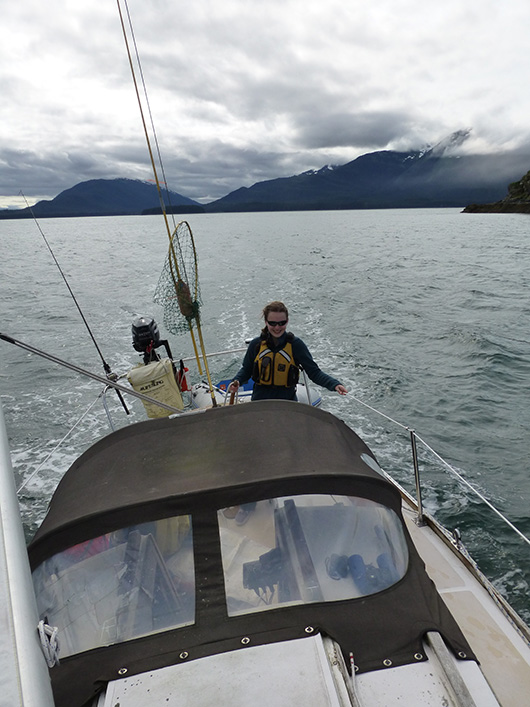In one of our first online discussions, each of us core students talked about an environment we had spent some time observing. Han kicked us off by mentioning that the things that drew his eyes were the things he could see–animals and plants–and that they lead him to wonder about their interactions with the landscape.
I was startled to realize that nothing I had to say was about animals or plants. Until that conversation, I had not thought about the visibility of the things I first wonder about when exploring somewhere new. I realized that most of the questions I had about the place I explored–a winding branch of the Cannon River in Northfield, MN–were about things I cannot see. I had been there just as snow had melted off the dark, muddy banks, and I had wondered how the dissolved constituents in the water changed as the snow melted. Was there more organic matter in the stream in summer, as the thaw allowed frozen material to start breaking down? Why were the leaves in the stream still whole–did they not decompose during the winter? How did time of year influence the composition of the water? My mind went first to small things which I could not see.

At sea near Juneau
That online discussion got me thinking about the way I think. When exploring around my home in Juneau, Alaska, I am of course drawn to the great natural beauty of the mountains, forests, fjords, and wildlife around me. However, I also love mulling on less obvious natural phenomena. I spend hours on my sailboat trying to figure out what the tides are doing. In the twisty passages and waterways, there is no way of predicting what a rising tide really means about the direction the water is flowing–a fact which is often infuriating while trying to use the tide to increase the speed of our sailboat, but which is nonetheless endlessly fascinating. I also am drawn to the water itself. I spent many happy hours one summer (on the same sailboat) reading the chemistry section of an oceanography textbook, and the excitement I had about that book was the same as the excitement I felt while wondering about the invisible constituents of the Northfield stream. There is something about the tiny particles and invisible movements of water that changes it from an everyday occurrence to a mystery waiting to be explored.
I do not know what I will want to investigate when I arrive in Siberia. I have been told by students that have gone in the past that that is ok–my ideas will change when I stand on the uneven ground and experience the place for the first time. But I am excited that, in preparation for the trip, I have been able to understand my own thinking better, and I look forward to trying to understand something invisible.




Comment(1)-
Peter Han says
June 26, 2014 at 9:10 pmVery cool, glad to hear more about your chemical thinking and where it came from.
There will be plenty of time for mulling stuff over on the water once we get on the barge, you’ll be right at home.